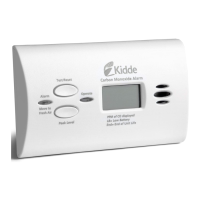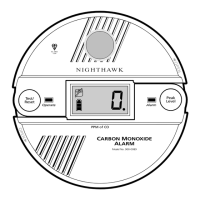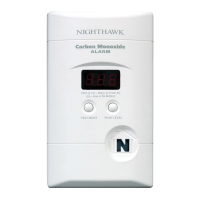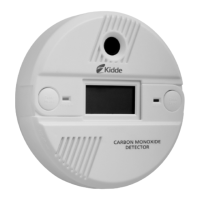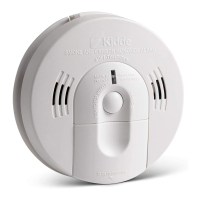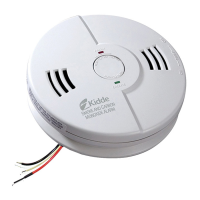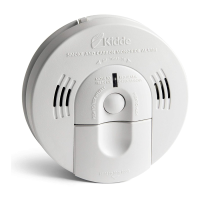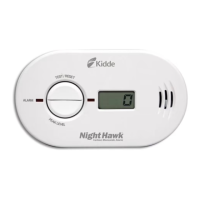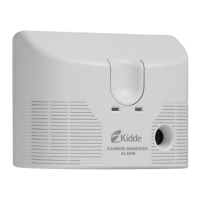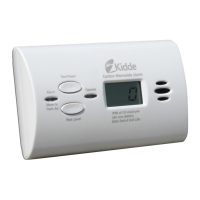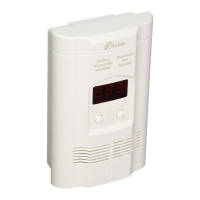4. Recommended Locations
5. Locations to Avoid
Mobile Homes
Modern mobile homes have been designed to be energy efficient. Install
smoke alarms as recommended in Figure 2A.
In older mobile homes that are not well insulated compared to present
standards, extreme heat or cold can be transferred from the outside to the
inside through poorly insulated walls and roof. This may create a thermal
barrier that can prevent the smoke from reaching an alarm mounted on the
ceiling. In such units, install the alarm on an inside wall with the top edge
of the alarm at a minimum of 10 cm (4”) and a maximum of 30.5 cm (12”)
below the ceiling (Figure 2A).
If you are not sure about the insulation in your mobile home, or if you notice
that the outer walls and ceiling are either hot or cold, install the alarm on an
inside wall. For minimum protection, install at least one alarm close to the
bedrooms. For additional protection, see Figure 1A.
WARNING: Test your alarm operation after mobile home has
been in storage or unoccupied, and at least once a week during use.
• Do not place in direct sunlight or install near high ambient light
areas; the bright light may reduce one’s ability to notice the strobe
light.
• Extreme temperatures may affect the sensitivity of the alarm.
Do not install in areas where the temperature is colder than
4.4°C (40°F) or hotter than 37.8°C (100°F), such as garages and
unfinished attics.
• Do not install in areas where the relative humidity (RH) is greater
than 95%, non-condensing. Very humid areas, with moisture or
steam, can cause nuisance alarms.
• Avoid outdoor locations (this device is not listed for outdoor use).
• Do not install within 0.9 m (3’) of the following: The door to a
kitchen, or a bathroom that contains a tub or shower, forced air
supply ducts used for heating or cooling, ceiling or whole house
ventilating fans, or other high air-flow areas.
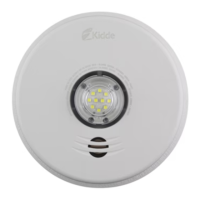
